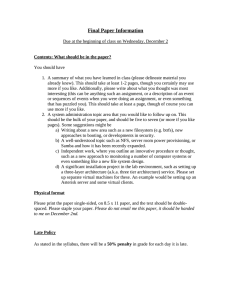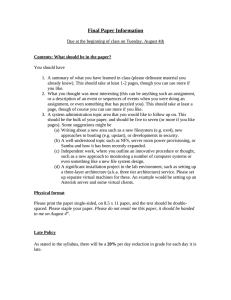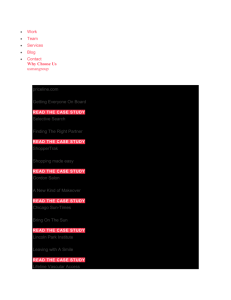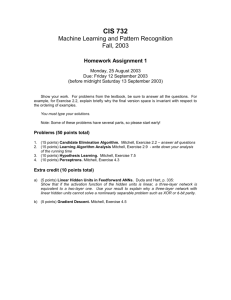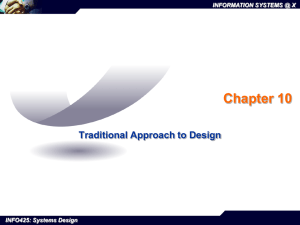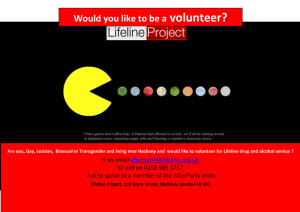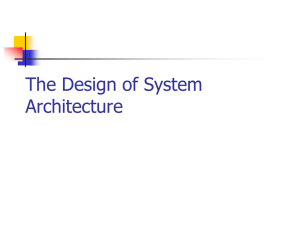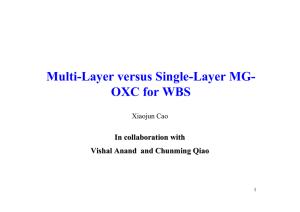Key Terms – Quiz 3
advertisement
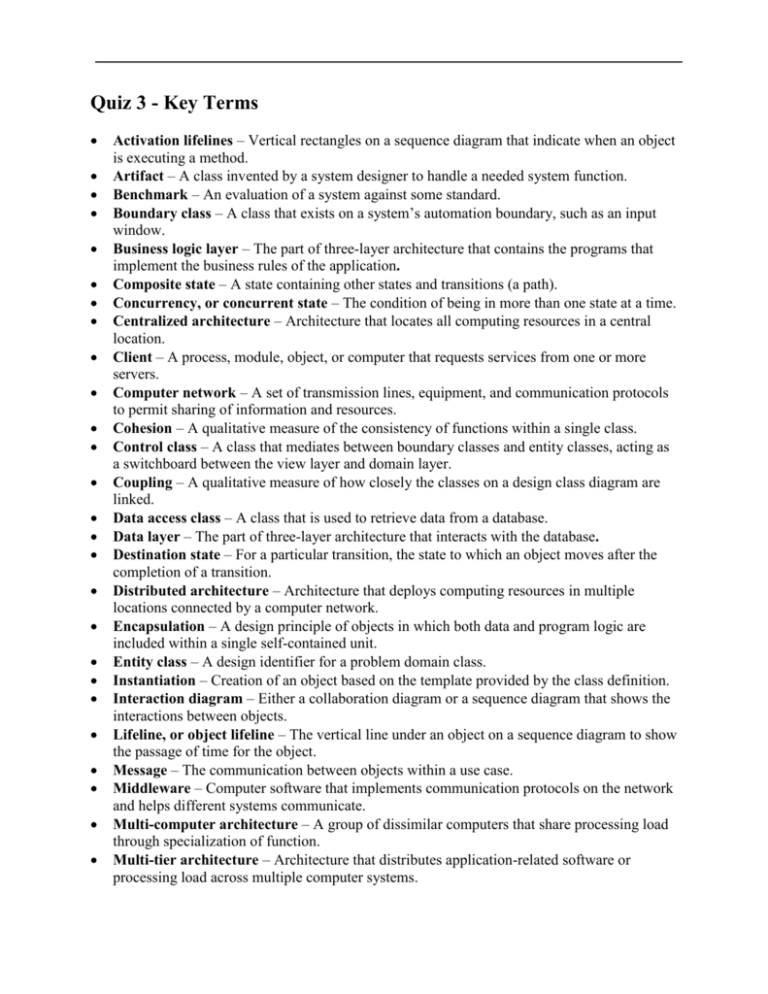
Quiz 3 - Key Terms Activation lifelines – Vertical rectangles on a sequence diagram that indicate when an object is executing a method. Artifact – A class invented by a system designer to handle a needed system function. Benchmark – An evaluation of a system against some standard. Boundary class – A class that exists on a system’s automation boundary, such as an input window. Business logic layer – The part of three-layer architecture that contains the programs that implement the business rules of the application. Composite state – A state containing other states and transitions (a path). Concurrency, or concurrent state – The condition of being in more than one state at a time. Centralized architecture – Architecture that locates all computing resources in a central location. Client – A process, module, object, or computer that requests services from one or more servers. Computer network – A set of transmission lines, equipment, and communication protocols to permit sharing of information and resources. Cohesion – A qualitative measure of the consistency of functions within a single class. Control class – A class that mediates between boundary classes and entity classes, acting as a switchboard between the view layer and domain layer. Coupling – A qualitative measure of how closely the classes on a design class diagram are linked. Data access class – A class that is used to retrieve data from a database. Data layer – The part of three-layer architecture that interacts with the database. Destination state – For a particular transition, the state to which an object moves after the completion of a transition. Distributed architecture – Architecture that deploys computing resources in multiple locations connected by a computer network. Encapsulation – A design principle of objects in which both data and program logic are included within a single self-contained unit. Entity class – A design identifier for a problem domain class. Instantiation – Creation of an object based on the template provided by the class definition. Interaction diagram – Either a collaboration diagram or a sequence diagram that shows the interactions between objects. Lifeline, or object lifeline – The vertical line under an object on a sequence diagram to show the passage of time for the object. Message – The communication between objects within a use case. Middleware – Computer software that implements communication protocols on the network and helps different systems communicate. Multi-computer architecture – A group of dissimilar computers that share processing load through specialization of function. Multi-tier architecture – Architecture that distributes application-related software or processing load across multiple computer systems. Navigation visibility – A design principle in which one object is able to view and interact with another object. Network diagram – A model that shows how application layers are distributed across locations and computer systems. Object reuse – A design principle in which a set of standard objects can be used over and over again within a system. Origin state – For a particular transition, the original state of an object from which the transition occurs. Package – A symbol used to denote a group of similar elements. Path – A sequential set of connected states and transitions. Persistent class – An entity class that exists after a system is shut down. Postcondition – A set of criteria that must be true upon completion of the execution of a use case. Precondition – A set of criteria that must be true prior to the initiation of a use case. Scenario, or use case instance – A particular sequence of steps within a use case; a use case may have several different scenarios. Separation of responsibility – A design principle in which analysts divide a class into several highly cohesive classes. Server – A process, module, object, or computer that provides services over a network. State – A condition during an object’s life when it satisfies some criterion, performs some action, or waits for an event. Stereotype – A way of categorizing a model element by its characteristics, indicated by guillemets (<< >>). System sequence diagram – A diagram showing the sequence of messages between an external actor and the system during a use case or scenario. Three-layer architecture – A client/server architecture that divides an application into the view layer, business logic layer, and data layer. Transition – The movement of an object from one state to another state. Turnkey system – A complete system solution, including software and hardware, which can be turned over to the purchasing organization. Use case diagram – A diagram to show the various user roles and how those roles use the system. View layer – The part of three-layer architecture that contains the user interface. Visibility – Notation of whether an attribute can be directly accessed by another object; indicated by plus or minus signs.
